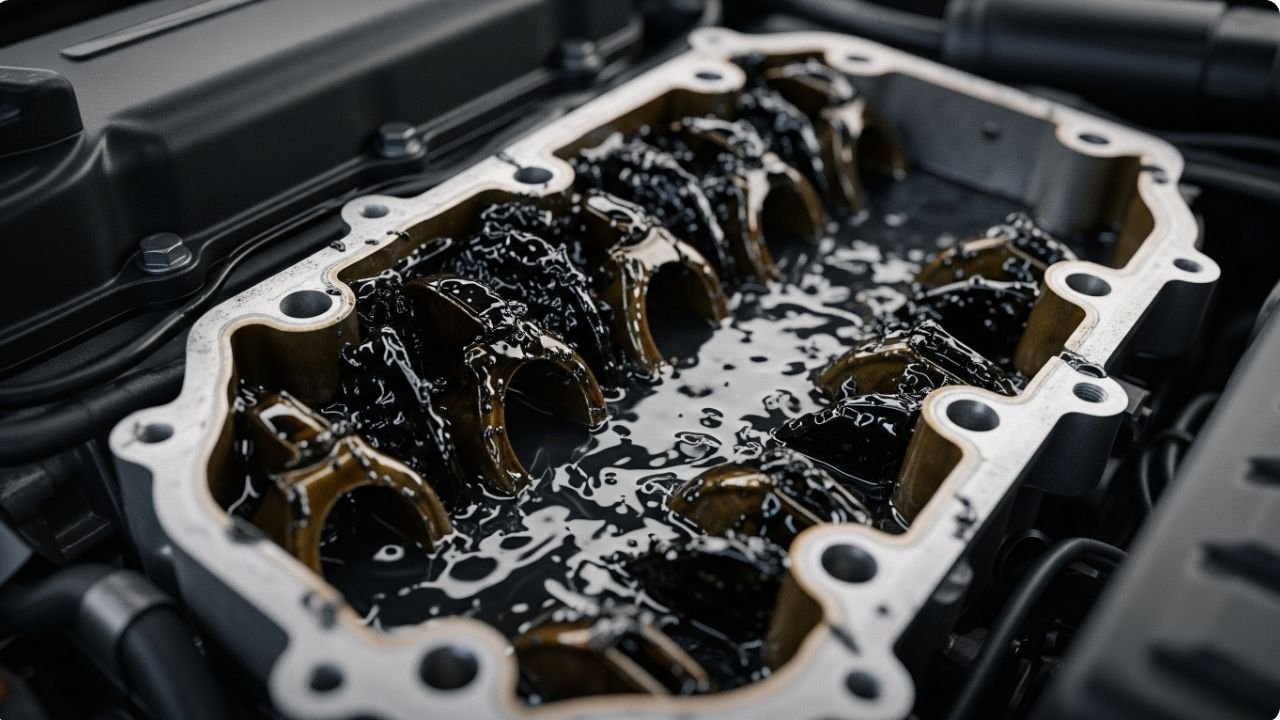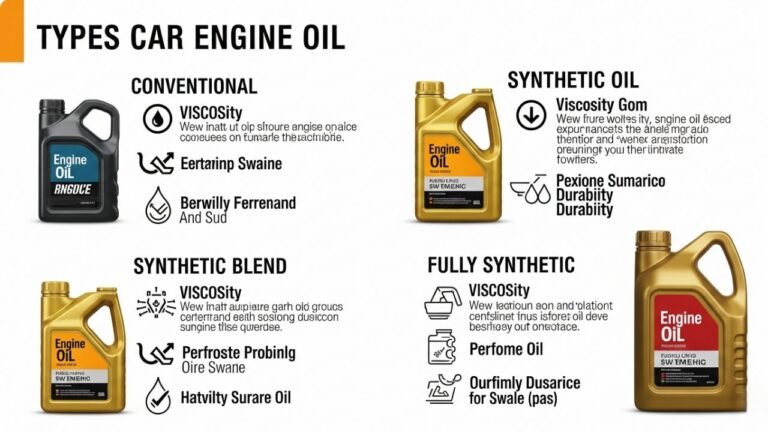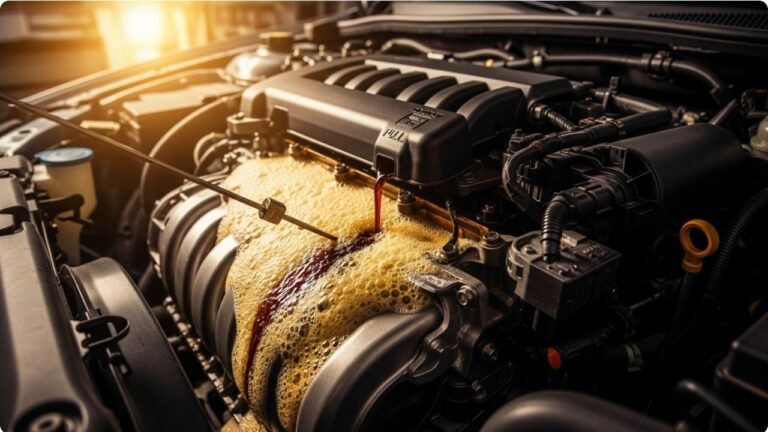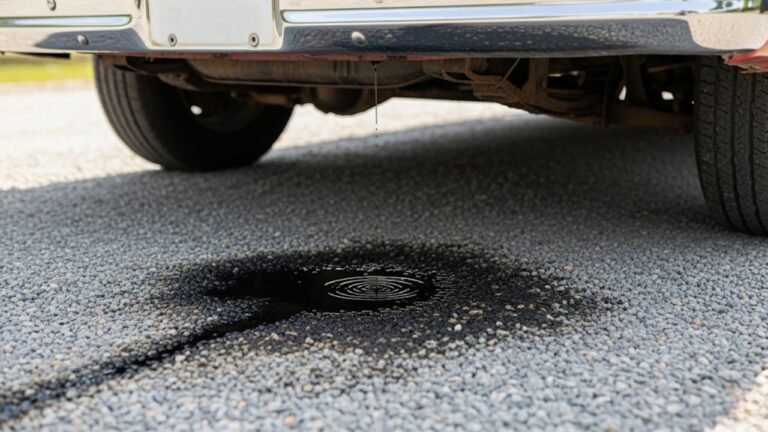Car Mixing Oil and Water: Causes, Fixes, and What You Should Never Ignore

You’re driving along on a regular day, maybe heading to work or picking up your kid from school, when suddenly you notice something odd—white smoke from the exhaust, or a milkshake-like goo under your oil cap. That’s when it hits you—your car is mixing oil and water. This isn’t one of those “leave it for the weekend” problems. It’s more like your engine waving a white flag, begging for help.
When a car mixes oil and water, it’s usually a sign of a bigger issue. These two fluids are meant to stay in their lanes—oil lubricates the engine, and coolant keeps it from overheating. When they mix, something has gone wrong. Very wrong.
In this guide, I’ll walk you through what causes this mix-up, what symptoms to watch for, how to fix it, and how you might prevent it in the future. We’ll keep things simple, like you’re talking to a buddy in a garage over a cup of tea. No jargon, no judgment—just honest advice with a splash of personal experience.
What Does It Mean When a Car Is Mixing Oil and Water?
Let’s get the basics straight. When someone says their car is mixing oil and water, they usually mean that engine oil and coolant are blending somewhere inside the engine. This is not natural. It’s like mixing orange juice with milk—just wrong on so many levels.
Oil and coolant have very different jobs:
- Engine oil keeps parts smooth and reduces friction.
- Coolant (antifreeze) keeps the engine cool and prevents overheating.
They travel through separate pathways. When they mix, it means one of those walls has been breached. This breach could lead to severe engine damage if ignored.
Signs Your Car Is Mixing Oil and Water:
- Milky, frothy oil on the dipstick or under the oil cap.
- White exhaust smoke.
- Overheating engine.
- Bubbles in the radiator or coolant reservoir.
- Low oil or coolant levels for no clear reason.
- Poor engine performance or misfiring.
I’ve seen cars still running with mixed fluids, but believe me, they don’t last long. One day, you’re driving. The next day, the engine seizes, and you’re calling a tow truck.
Common Causes of Oil and Water Mixing in a Car
There’s no one-size-fits-all cause when your car is mixing oil and water, but some problems are more common than others. Let’s break them down.
1. Blown Head Gasket
This is the most notorious culprit. The head gasket sits between your engine block and cylinder head. When it fails, it allows oil and coolant to seep into places they shouldn’t.
Symptoms of a blown head gasket:
- Milky oil.
- Overheating.
- White smoke from the tailpipe.
- Loss of power.
The first time I dealt with a blown gasket, I thought the car just needed an oil change. I drove it another week. Big mistake. The repair bill was double what it would’ve been if I acted earlier.
2. Cracked Engine Block
An engine block can crack due to extreme overheating or freezing (yes, coolant matters in winter too). When that happens, oil and coolant can meet and mingle.
Why it happens:
- Running your engine hot for too long.
- Letting the coolant freeze inside.
- Manufacturing defects (rare but possible).
A cracked block is bad news. Depending on the damage, you might need a new engine. That’s the point when many folks consider getting a new car instead.
3. Faulty Oil Cooler
Some engines have oil coolers where oil and coolant pass through a shared unit. If the seals or internal parts fail, they can mix fluids.
Clues your oil cooler is the issue:
- Oil in coolant but not the other way around.
- Sludge in the reservoir.
- No overheating, but a mysterious fluid mess.
The good news? Replacing an oil cooler is often cheaper than engine work. Still, it needs quick attention.
4. Warped Cylinder Head
This usually happens after repeated overheating. The metal head warps and doesn’t seal properly, allowing coolant and oil to mix.
Things to look for:
- Similar signs to a blown gasket.
- Irregular engine temperature.
- Engine misfire or knock.
This one creeps up. If your temp gauge is always flirting with the red zone, don’t ignore it. Warped heads are like slow poison to your engine.
5. Failed Intake Manifold Gasket
In some engines—especially V6 or V8 types—the intake manifold has coolant passages. If the gasket fails, it can cause oil and coolant to cross paths.
Symptoms might include:
- External leaks near the intake.
- Rough idling.
- Milky oil (but not always in extreme amounts).
It’s a bit harder to spot unless you’re actively inspecting your engine, but it’s worth checking if the other parts seem fine.
How to Diagnose Oil and Water Mixing in Your Car
Diagnosing the issue early can save you from a blown engine—or even worse, buying a new car when it’s avoidable. Here are simple ways to figure it out.
Visual Inspection
- Pull the oil dipstick. Is the oil milky, cloudy, or frothy?
- Check under the oil cap. Does it look like a milkshake?
- Look at your coolant. Is it brown or oily?
These signs usually scream “car mixing oil and water,” even if you’re not a mechanic.
Pressure Test
A mechanic can do a cooling system pressure test to see if it holds pressure. A leak suggests a blown gasket or cracked head.
Compression Test
This test checks each cylinder’s pressure. Low pressure in one or more cylinders could mean a head gasket issue or warped head.
Chemical Test (Block Tester)
This is a great trick. Mechanics use a chemical that changes color if exhaust gases are present in the coolant—another red flag for a blown gasket.
What Happens If You Ignore It?
Here’s the harsh truth: if your car is mixing oil and water, ignoring it is like driving toward a cliff with your eyes closed.
What can happen:
- Total engine failure.
- Sludge buildup that ruins bearings.
- Coolant leaks into oil, losing all lubrication.
- Oil in the radiator, reducing cooling efficiency.
And eventually, your engine might just stop working. I’ve seen this happen to friends who didn’t want to “deal with it right now.” They ended up selling the car for scraps.
Repair Options: How to Fix a Car Mixing Oil and Water
Let’s talk solutions. Here’s what you can do if your car mixes oil and water:
| Problem | Fix | Cost Range |
|---|---|---|
| Blown Head Gasket | Gasket replacement | $800 – $2,000 |
| Cracked Engine Block | Engine rebuild or replacement | $2,500 – $6,000+ |
| Faulty Oil Cooler | Replace oil cooler | $200 – $600 |
| Warped Cylinder Head | Machine shop repair or replacement | $500 – $1,500 |
| Intake Manifold Gasket Leak | Gasket replacement | $300 – $900 |
Tip: Always flush your cooling and oil systems after the repair. Otherwise, contaminated fluids can damage the newly repaired parts.
Preventing Oil and Coolant from Mixing
The best fix is prevention. Here are simple habits that can save your engine:
- Check coolant and oil regularly (every few weeks).
- Never drive an overheating car.
- Use the right coolant for your car.
- Replace gaskets before they get too old.
- Warm up your car during winter months.
- Use quality oil and coolant.
Treat your car like a friend. If it’s making weird noises or acting hot-headed, give it attention. It’s better than ending up with a broken-down engine in the middle of nowhere.
Real-Life Story: My Buddy’s Expensive Lesson
A few years back, my friend Hasan bought a used sedan. It looked fine on the outside, and it ran like butter—until it didn’t. A month in, he noticed white smoke puffing out like a genie every time he started the engine. The oil looked like coffee with too much cream. Yep, his car was mixing oil and water.
He ignored it, thinking it was just cheap oil or cold weather. I told him to check the head gasket, but life got busy. You know how that goes. A few weeks later, the engine seized on his way to work. Towed it to a garage. Diagnosis? Blown head gasket and a warped cylinder head.
Hasan had two choices: fix it for $2,200 or scrap the car. He ended up selling it for $500. He still calls it his “five-hundred-dollar mistake.”
Emotional Toll of Car Problems
When your car mixes oil and water, it’s not just a technical issue. It’s stressful. You lose trust in your car. You start doubting every noise, every shake, every slight temperature increase. It’s like walking on eggshells, hoping it won’t break down when you need it most.
For people who rely on their vehicle for work or family responsibilities, it’s not just an engine problem—it’s a disruption to life. Missed job interviews, canceled school runs, and the fear of breaking down in the middle of traffic. Car trouble can feel like betrayal, especially when you’ve been taking care of it.
That’s why catching these signs early is not just smart—it’s survival.
Can You Drive a Car That’s Mixing Oil and Water?
You can, but you absolutely shouldn’t. Driving a car that’s mixing oil and water is like continuing to jog on a twisted ankle. You’re only making the problem worse.
Here’s what can go wrong:
- Engine loses lubrication.
- Overheating becomes constant.
- Parts grind and wear down fast.
- Complete breakdown is almost guaranteed.
If you’re far from help and need to get home, keep it short, drive slowly, and stop often to cool the engine. But get it inspected ASAP.
Frequently Asked Questions (FAQs)
1. What causes a car to mix oil and water?
A few common causes include a blown head gasket, cracked engine block, oil cooler failure, or warped cylinder head. All of these allow coolant and oil to cross into each other’s systems.
2. Is it safe to drive when oil and coolant mix?
No, it’s not safe. You risk severe engine damage. Driving in this condition can lead to a full engine replacement, which is very expensive.
3. How do I know if my oil and water are mixing?
Look for signs like white smoke, milky oil, overheating, or coolant loss. A mechanic can run pressure and chemical tests to confirm it.
4. Can I fix it myself?
Only if you’re experienced with engine repair. Replacing a head gasket or oil cooler can be done at home, but requires the right tools and know-how.
5. How much does it cost to fix a car that’s mixing oil and water?
It depends on the cause. It could be $200 for a minor fix or up to $6,000 for a full engine replacement.
6. Can a coolant flush solve the problem?
No. A flush can clean contaminated fluid, but it won’t fix the breach. The source of the leak must be repaired.
7. Will sealant additives fix a blown head gasket?
Temporary sealants might hold for a short while but they’re not permanent. They’re more of a band-aid than a real fix.
8. How can I prevent this from happening again?
Routine maintenance is key. Always monitor oil and coolant levels, avoid engine overheating, and don’t delay gasket or radiator repairs.
Cultural Insight: In South Asian Car Culture
In places like Bangladesh or India, car maintenance often relies on gut feelings and quick fixes. It’s common for mechanics to pour additives or sealants into the coolant and say “It’ll hold.” And sometimes, it does—for a week or two.
But if your car is mixing oil and water, a sealant won’t save you in the long run. You need a proper mechanical repair. And in local garages, always double-check the diagnosis. Not every shop has the right tools for a pressure or compression test. Get a second opinion if you can.
Final Thoughts: Don’t Ignore the Warning Signs
Cars talk—they just don’t speak your language. But they do cough (white smoke), sweat (leaks), and even cry (overheat). If your car is mixing oil and water, don’t brush it off. Think of it like your body having a fever. It’s trying to tell you something important.
Fixing it might seem expensive or overwhelming, but letting it slide will always cost more in the end. Like my buddy Hasan, you could end up with a $500 “souvenir” from a once-beautiful car.
So be smart. Watch for signs. Ask questions. And when in doubt, talk to a mechanic before it’s too late. Your engine—and your wallet—will thank you.






